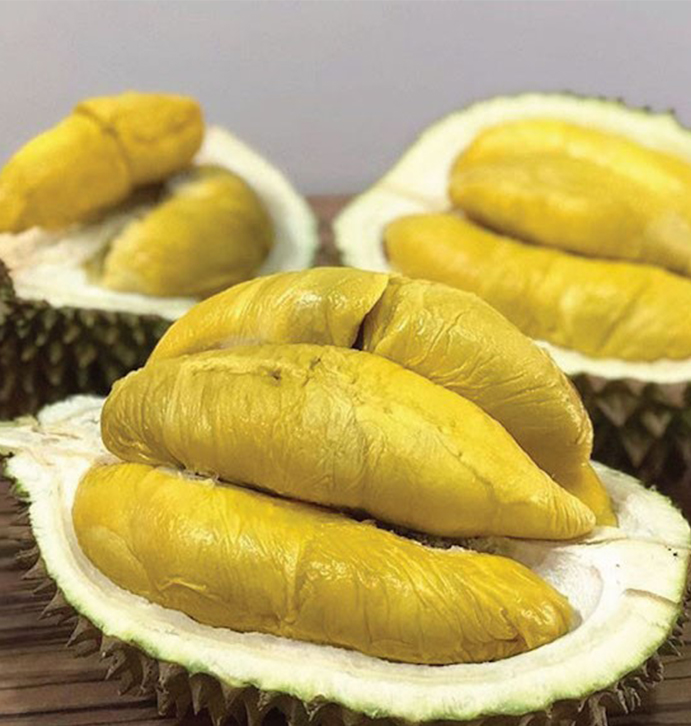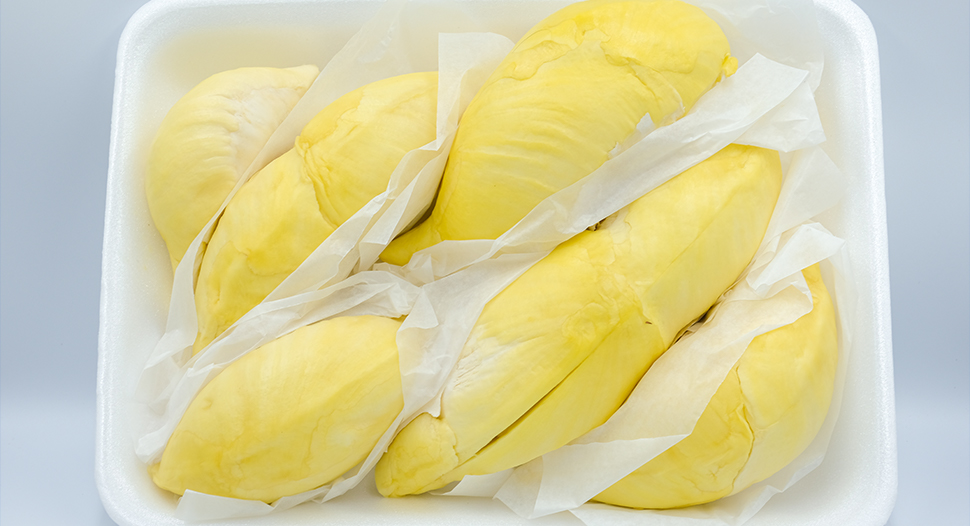From the creamiest to rich and bittersweet flavours, there are many other spiky delights to choose from beyond the evergreen favourite Mao Shan Wang!
If you love it, nothing else can compare; if you hate it, it has the power to ground flights in Indonesia, evacuate Australian universities and even send German postal workers to hospital!
But don’t run away from durians just yet, especially when the season for it is in full swing. Our little red dot has plenty of types for you to choose from, but here’s 5 durians that aren’t Mao Shan Wang* and how to pick the best durian!
Here’s how to pick the best durian
- Don’t just look at it. The colour of the durian’s flesh alone is not a good gauge of quality. While yellow durians may look appealing, it all depends on the type of durian — pale-fleshed types can surprise you with their flavour profiles too!
- Smell it. You should be able to detect the right amount of sweetness or bitterness with a whiff of the flesh. The stronger the aroma, the riper and fresher the fruit is!
- Touch it. Press on the flesh lightly (but do ask for a glove or a bag to cover your hand for hygiene purposes). Hard and dry means that it is unripe, while overly mushy flesh can indicate an overripe fruit.
*All durians are available, but not at all FairPrice stores. Please check in with your nearest FairPrice store to see if the type you are looking for is in stock.
1. Singapore Red Prawn (D13)
- What does it look like on the outside?
Bright green husk - What does it look like on the inside?
Bright orange flesh with large seeds - What does it taste like?
Fragrant, sweet and sticky
Also regarded as the “kampung” durian, the Singapore Red Prawn (D13) has bright orange flesh and a sticky sweetness that’s perfect if you’re a newbie!
Image credit: yearofthedurian
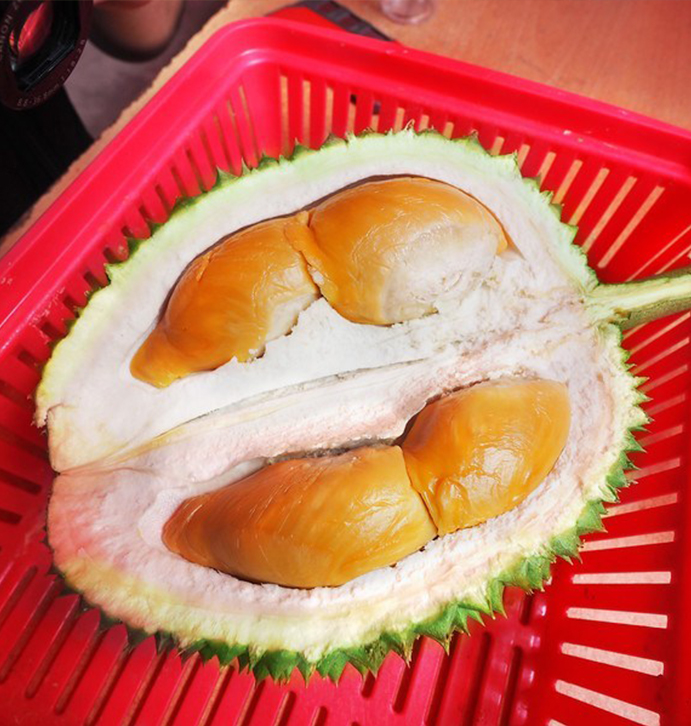
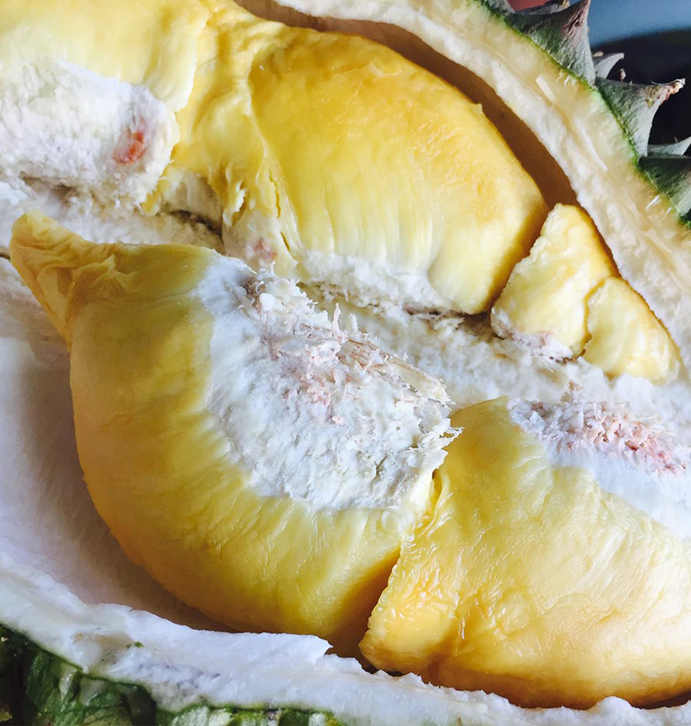
2. Penang Red Prawn (D175)
- What does it look like on the outside?
Dusky brown husk with petite spikes - What does it look like on the inside?
Bright to pale orange flesh - What does it taste like?
Sweet with a tinge of bitterness
Compared to the Singapore Red Prawn (D13), the Penang (D175) Red Prawn durian has flesh that can range from bright to pale orange flesh that borders on gingery grey. However, it has the same creamy, sweet and sticky texture.
Image credit: yearofthedurianv
3. XO
- What does it look like on the outside?
Small with a thin and brownish-green husk - What does it look like on the inside?
Pale yellow and watery thick flesh - What does it taste like?
Bitter with a slight alcoholic aftertaste
The XO durian is perfect if you love strong and bittersweet flavours. Just like its name suggests, the famed alcohol taste is due to the extended fermentation period inside the husk.
Image credit: The Straits Times
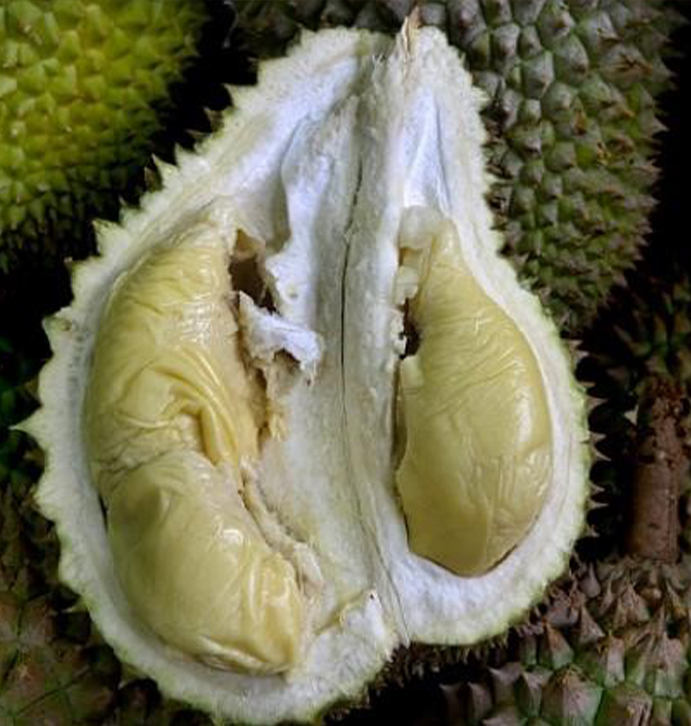
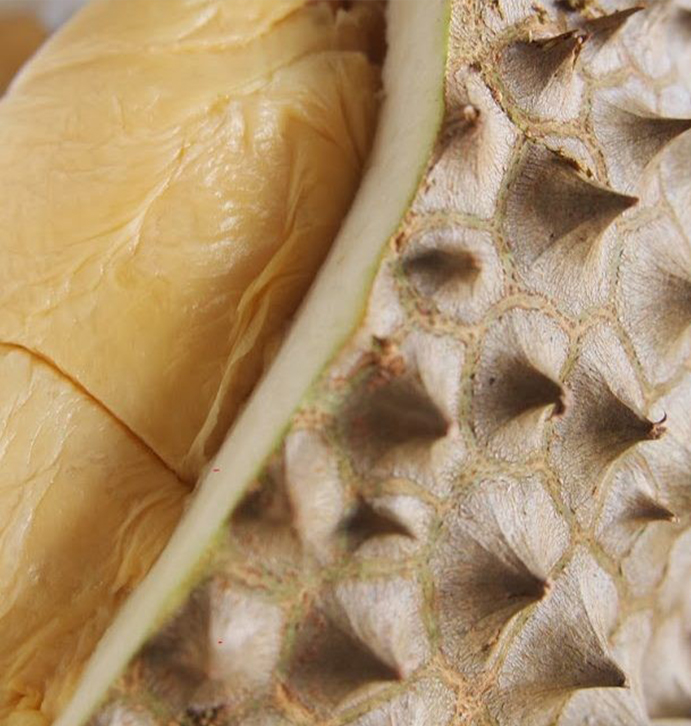
4. Golden Phoenix (or “Jin Feng”)
- What does it look like on the outside?
Small with a thin husk - What does it look like on the inside?
Pale yellow-white with very soft, wet flesh and tiny seeds - What does it taste like?
Bittersweet and creamy
The Golden Phoenix durian is slightly less pungent than Mao Shan Wang and offers a good amount of tasty flesh at a lower price. Talk about more bang for your buck!
Image credit: The Straits Times
5. Black Gold
- What does it look like on the outside?
Varying sizes with dark greyish green seams - What does it look like on the inside?
Dark and greyish undertones on the flesh - What does it taste like?
Intense and buttery with a bitter aftertaste
While we’ve saved one of the best for last, this is a little sneaky — Black Gold durians are the cream of the Mao Shan Wang crop! Small and odd-shaped ones are frequent, but a top grade will have distinct dark greyish seams with a deeper and bitter aftertaste.
Image credit: Jocelyn Wong, Burpple
